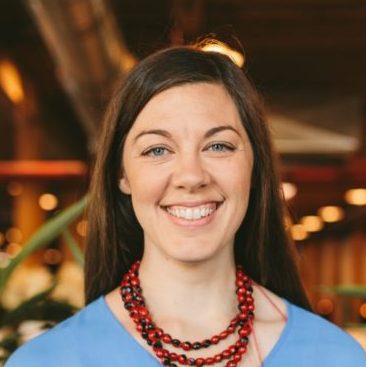My kids are not thrilled about this, but our family has taken up a weekend habit of going hiking with our puppy — which my kids find unbearable (so much FOMO with the neighborhood friends), but the dog finds simply thrilling.
One Sunday afternoon, we went to a park that was new to us, with acres and acres of trails. We were having a blast watching the dog leap over logs, but after a while we discovered a problem — the trails were not well-marked. Somehow the blue trail became the red trail, and there was a split in the path but no sign, and the older kid got a blister, and the younger one got hungry, and we were out of poop bags for the dog. And pretty soon, I realized that it was getting dark.
You know, things that feel fun in the light aren’t that fun in the dark. Suddenly, I did not want to throw that stick for the dog to fetch. Suddenly, I did not want indulge my son’s theories about how animals probably use the little mushrooms on the side of the dead tree for a ladder. Suddenly, I’m mad at my husband for not knowing the way, mad at whatever incompetent person was in charge of marking the trail, mad at myself for having a dead cell phone battery and for agreeing to a stupid family hike in the first place.
And then my eight-year old drops a nugget of parent-shaming wisdom: “Mom, you know it’s not very safe to bring your kids out here when the sun has gone down,” he says.
It’s not safe to be in the dark. How true.
After they left Egypt, just before God gave the Torah to Moses and to the people of Israel, God revealed himself. But God not did not appear as a bright light. God didn’t come as an illuminated angel, as a shining star, as a pillar of fire. The Lord said to Moses, “I am going to come to you in a dense cloud…” And sure enough, God did — smoke, quaking mountain, and darkness is how God was revealed that day.
And then after the ten commandments had been given, we learn that “The people remained at a distance, while Moses approached the thick darkness where God was.”
The darkness is not safe, no. But the darkness is where God is.
We are in the season of Epiphany, when we focus on the light that is revealed in Christ. But Barbara Brown Taylor is right, I think, that light is only half of the story of our faith.
As Barbara points out, God-talk, most of the time, is light-talk. So much of the language we use is soaked in this idea of light — brightness, clarity, shining, illumination. The sunny parts are the parts we talk about in church, so no wonder we aren’t quite so sure what to do when we end up in the dark. We aren’t sure what to do with the doubt, the dread, the grief, the stumbling, the suffering.
We’ve built an arsenal of ways that we can avoid the darkness that we find ourselves in. We buy stuff — allowing the magic of marketing and consumption to lull us into the notion that a new pair of shoes might transform us into people who don’t have to manage the terrible thing. We get control if it — buy a book, learn some new vocabulary and become an expert in the logic of the terrible thing to try to out-smart the darkness. We make sense of it — mine our memories for where we misstepped, what we did wrong to bring the terrible thing into our lives, or appeared in need of some lesson to a God who tortures in order to teach. Mostly, though, I think we learn to avoid the darkness by pretending it isn’t there at all. We smile. We are fine. We say, “God is good. All. The. Time.”
Maybe all this avoiding is because we’ve somehow come to believe that acting the right way can eliminate the darkness from our lives. If God is light, then maybe darkness means that I have left God’s presence, or God has left me; avoiding the darkness must mean that God’s with me, or that God loves me still.
But this is not our story. In fact, the people of Israel were not a people who avoided, controlled, or ignored the darkness. Their story — our story — is of “approaching the thick darkness where God was.” Of Jacob, wrestling in the dark for a blessing. Of Peter, James and John entering a dark cloud on the mountain. Of Saul, suddenly unable to see any light at all, before he became Paul and showed us all the light of Christ.
Some of the stories remind us that darkness is the beginning of new life. In the dark, the seed sprouts. In the dark, the cells divide in the womb. In the dark, the human eye can see constellations of stars.
“The light shines in the darkness, and the darkness has not overcome it,” Scripture promises. And we are in Epiphany, the season of light. For those of us who find ourselves plunged into darkness, let’s take heart: our God is not afraid of the dark. In fact, we serve a God who dwells with us, who stands by us, who even is revealed to us when the light is nowhere to be found.
The darkness is not safe, to be sure. But the thick darkness, too, is where God is.
Photo by Abby Castrillo on Unsplash

